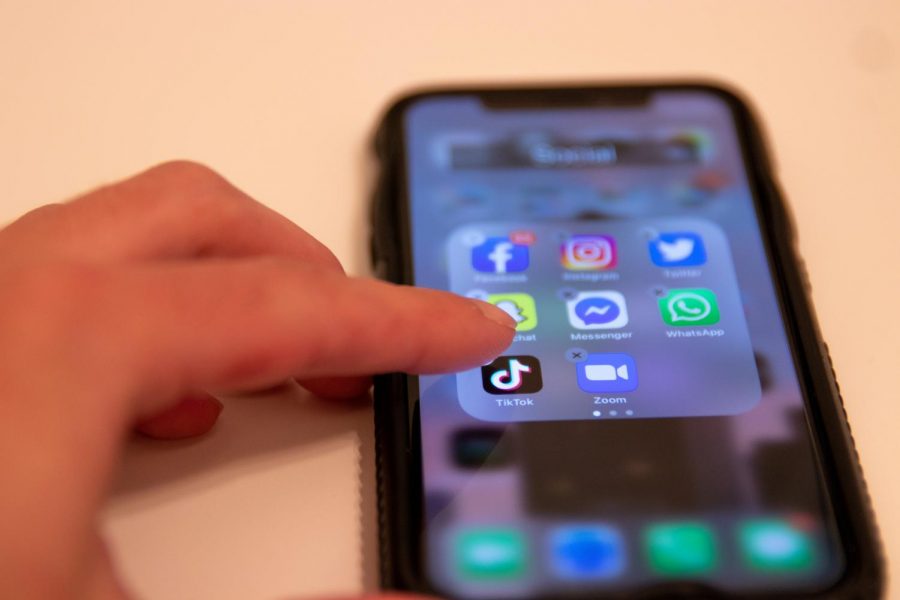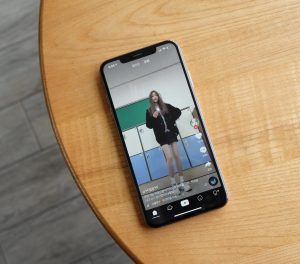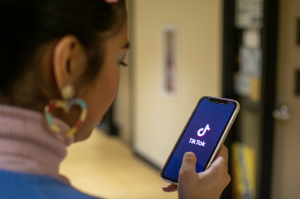Why I Really Deleted TikTok
How dancing on an app robs me of a professional future
Viral dances on TikTok are giving untrained dancers new opportunities and financial benefits while aspiring professionals are left behind.
October 14, 2020
Believe me, I completely understand why TikTok has 800 million users. The short video format, the hilarious trends and the popular dances are addicting. But the last is what drove me to delete the app at the start of 2020, being a dancer myself.
Dance is a performative art, usually serving as live entertainment or an escape for the audience. When the pandemic hit in March, TikTok quickly became an escape from the reality of closed theaters. Most people had ample amounts of down time, leading TikTok to hit the most downloads ever recorded in a single quarter: 315 million.
Short, choreographed dances blew up as more users learned, replicated and then shared them to their own platforms, becoming a staple of quarantine entertainment. I, too, downloaded TikTok and engaged in the seemingly harmless way to stay busy.
At first, I thought TikTok dances could be beneficial to the dance community. With more 15-second dances blowing up, maybe people would start giving dance the attention it deserves. However, I quickly realized that users with large platforms were doing what I have worked for my whole life: getting paid to dance.
But now, the career I have had to defend ever since declaring my major is suddenly the most popular and profitable choice.
I’ve been dancing for 16 years, pursuing my passion for ballet since age four. Now as I am earning my BFA degree in dance in New York City, I would argue that I am dedicating my life to the artform, spending up to 30 hours in the studio per week.
My goal is to become a professional dancer — a career path usually looked down upon by conventional job markets. In multiple conversations, I’ve felt the need to defend my major while people mutter how being a dancer is “not a real job.” But now, the career I have had to defend ever since declaring my major is suddenly the most popular and profitable choice.
In July of this year, TikTok announced its own Creator Fund, a pool of $200 million to pay successful creators on the app. Users older than 18 with a following of at least 10,000 can now perform dances and get paid for it, over and over, with each new trend. Besides this new fund, brand deals and sponsorships made professional dancing a trendy job that required a simple “woah” and wink.
I understand that TikTok content is meant to be lighthearted, but the top percent of “dancers” are making an undeniably large amount of money from the app. These TikTok dancers quickly transitioned into choreographers, too.
As I’ve always been told, dancers are the instruments, and choreographers are the composers. What makes a good choreographer is subjective to everyone, but the ones I’ve worked with aim to connect with the audience in an emotional way.
On TikTok, movement is used purely as a distraction from emotion instead of producing an emotion, diminishing the creative process. People want to see a satisfying dance just to scroll to another one, a cycle that will continue for hours until they can snap out of TikTok’s alternate universe.
On the other hand, I did notice that some choreography was at least attempting to elicit an emotion. With an abundance of air-humping and an uncomfortable amount of lip-biting, certain dances were clearly more sexual, which would not be a problem if teenage girls didn’t make up a third of the user base.
Girls around ages 13 and 14 are the ones recreating these steps and idolizing the TikTok creators popularizing them. The TikTokers choreographing these overtly sexual dances need to be more responsible with their platform and understand how young girls now glorify these suggestive moves.
Downloading an app does not make you a professional dancer.
Until TikTok starts promoting hip-hop or colloquial dances that are more appropriate for their underage target audience, you won’t find that app back on my phone anytime soon.
Downloading an app does not make you a professional dancer. The hours, days and years spent perfecting an artform make you a professional dancer. Hours spent at the ballet barre learning how to sew pointe shoes. Days spent learning a time step in tap shoes and how to do a jazz square. Years spent exploring how to be an artist and tell a story with only your body.
The professional part will feel earned knowing that I have put so much effort into my passion. So, yes, I deleted TikTok, but only because I refuse to support a platform that simplifies an artform that I have spent 16 years studying.
A mere 15 seconds is not nearly enough time to fully grasp a choreographic concept meant to be performed live. So if you decide to consume dance on a screen, at least virtually tune in to a performance that features artists who need the support instead of mindlessly monetizing mediocre choreography.















